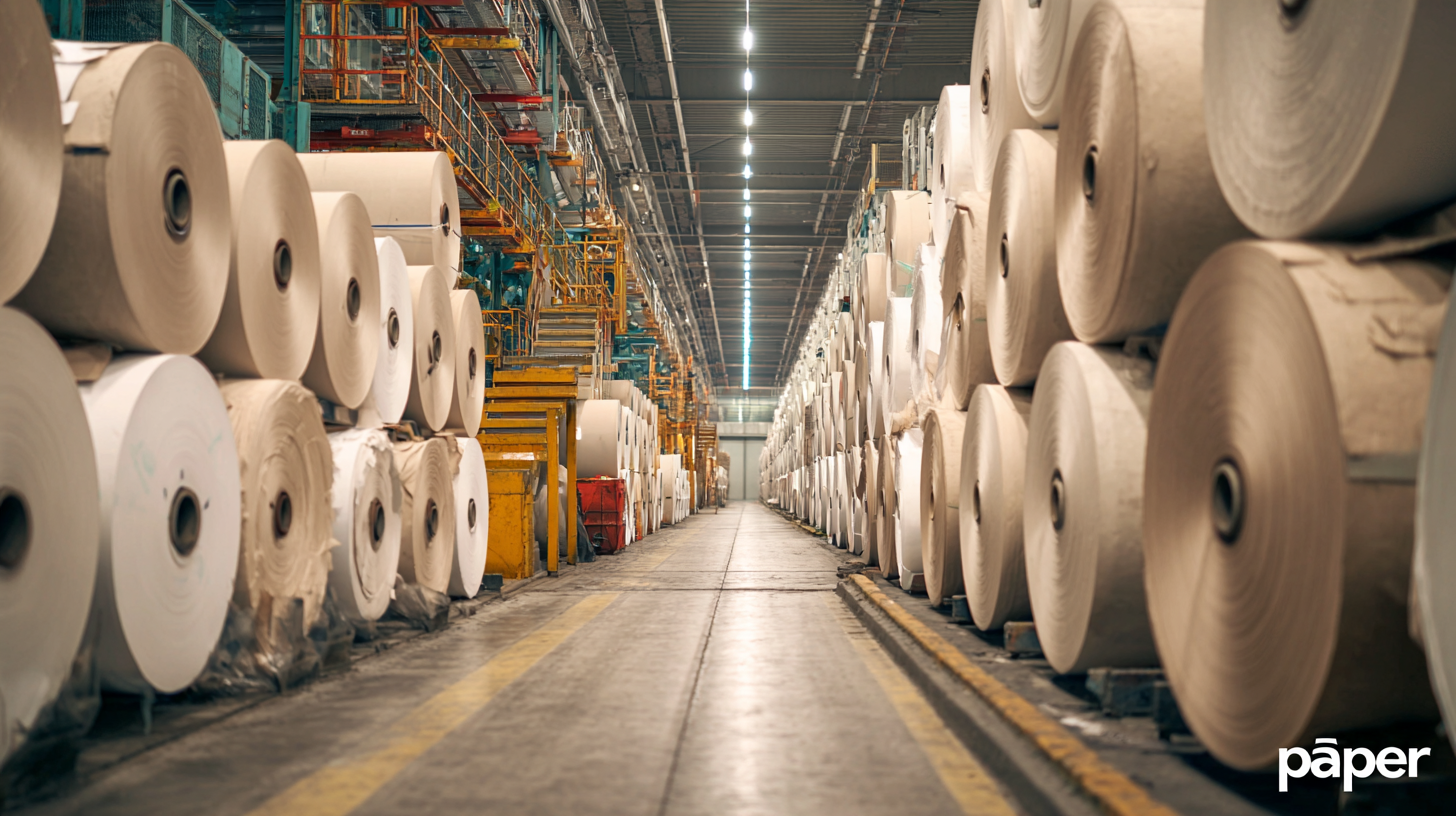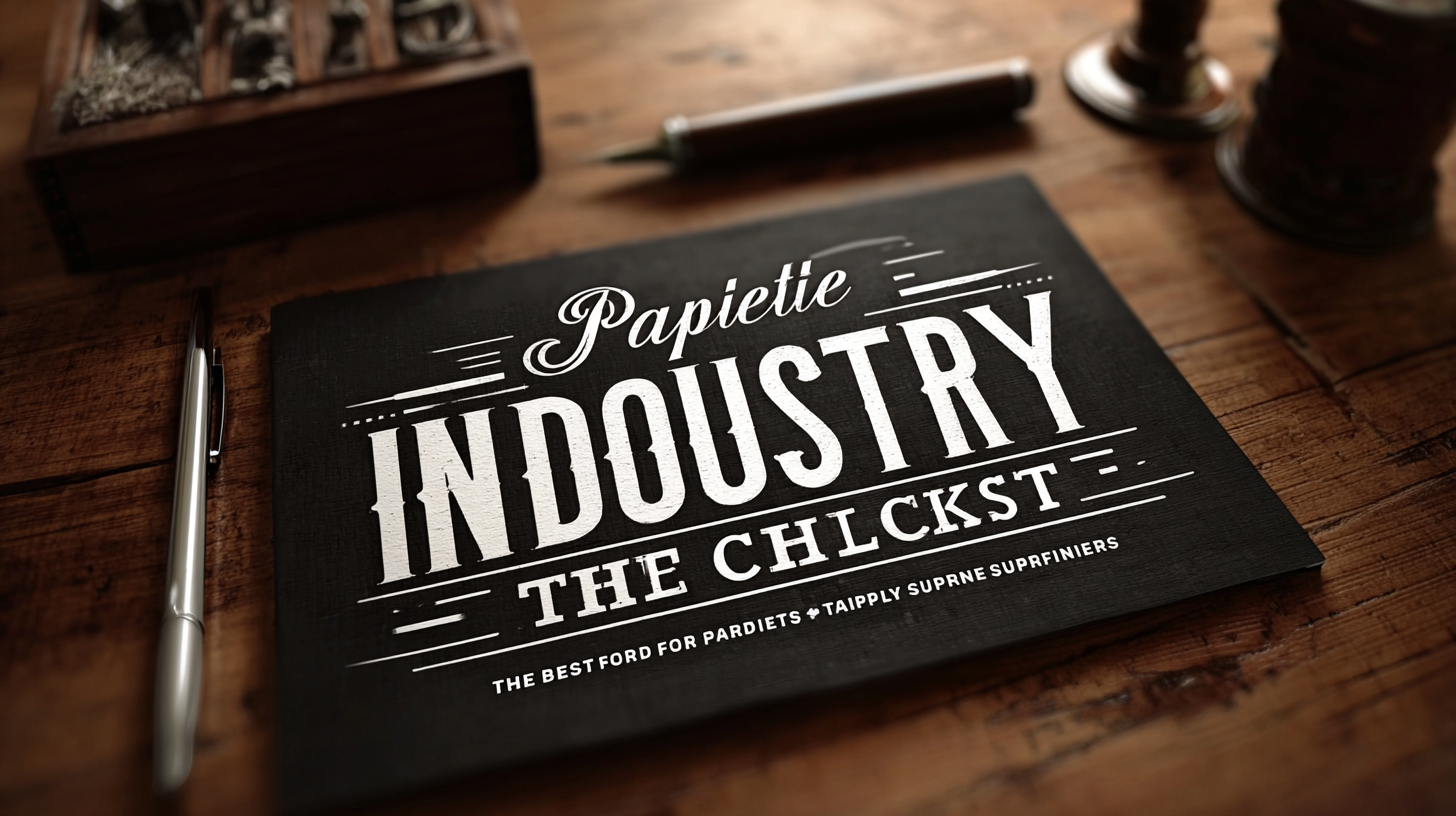
Ultimate Checklist for Sourcing from the Best Paper Industry Suppliers
In today's competitive market, sourcing materials from the best suppliers in the Paper Industry is more crucial than ever for businesses aiming to optimize their operations and drive sustainable growth. The paper sector, known for its intricate supply chains and diverse range of products, requires a strategic approach to procurement that not only emphasizes quality but also ensures reliability and cost-effectiveness. By understanding the benefits of collaborating with top-tier suppliers, companies can enhance their product offerings, improve production efficiency, and establish strong relationships that contribute to long-term success.

This blog presents an ultimate checklist designed to guide businesses in sourcing effectively within the Paper Industry, ensuring that every decision made is informed and aligned with their operational goals. Whether you are looking to improve the quality of your paper products, reduce lead times, or explore innovative solutions, this checklist will serve as an invaluable resource for navigating the complexities of supplier selection.
Essential Criteria for Evaluating Paper Industry Suppliers
When evaluating paper industry suppliers, essential criteria should encompass sustainability practices, supplier reliability, and commitment to ethical labor conditions. In light of growing consumer preferences for sustainable products, it’s crucial to partner with suppliers who prioritize eco-friendly methods and practices. For instance, the recent enhancements in recyclability testing methods proposed by industry organizations reflect an increasing focus on sustainability in the paper sector. By ensuring that suppliers adhere to these standards, companies can mitigate environmental impact and demonstrate their commitment to sustainability.

Additionally, building long-term relationships with suppliers who value transparency and worker conditions can significantly strengthen supply chain resilience. The importance of fostering such partnerships has been underscored in discussions on navigating supply chain challenges within the paper and packaging industries. By implementing criteria that include ethical practices and long-term reliability, businesses can navigate the complexities of the market while aligning with their core values and improving conditions throughout the supply chain. This multifaceted approach not only enhances corporate sustainability reporting but also contributes to a more ethical industry landscape.
Key Types of Paper Products and Their Specific Sourcing Needs
When sourcing paper products, it's essential to understand the specific needs associated with different types of paper. First, consider the various categories such as printing paper, packaging paper, and specialty papers. Each type has unique quality requirements, thickness, and finish. For instance, printing paper must ensure high brightness and excellent ink absorption for clear, vibrant outputs, while packaging paper needs to exhibit strength and durability to protect contents during transit.
Moreover, sourcing specialty papers, such as eco-friendly or custom-printed options, requires more intricate considerations. Suppliers should be vetted for their sustainability practices, certifications, and ability to handle customized orders. It's critical to establish a clear communication channel with suppliers to convey your specific needs, including dimensions, textures, and environmental compliance. Understanding these nuances will help businesses select the right suppliers that align with their quality expectations and sourcing requirements.
Ultimate Checklist for Sourcing from the Best Paper Industry Suppliers
Best Practices for Establishing Strong Supplier Relationships
Building strong supplier relationships is essential for businesses in the paper industry, as it can significantly impact operational efficiency and product quality. According to a recent report by Smithers Pira, around 59% of paper manufacturers believe that collaboration with suppliers enhances innovation and reduces lead times. Establishing open communication channels and regularly engaging with suppliers can cultivate trust and foster collaboration.
**Tip 1:** Regularly schedule meetings or calls with your suppliers to discuss performance, challenges, and opportunities for improvement. This proactive approach not only improves transparency but also strengthens the partnership.
Another crucial aspect is the alignment of values and goals. A study by Technavio revealed that companies with aligned strategic objectives with their suppliers see a 27% increase in cost savings over time. This alignment ensures that both parties are working towards common objectives, facilitating better resource allocation and problem-solving.
**Tip 2:** Work together on joint ventures or sustainability initiatives that resonate with both parties' missions, creating a win-win situation that can enhance loyalty and cooperation.
Investing time and resources into nurturing supplier relationships can yield substantial dividends, ensuring that your business remains competitive in a rapidly evolving market.
Strategies for Ensuring Quality Control in Paper Supply Chain
Ensuring quality control in the paper supply chain is paramount for businesses looking to maintain high standards and meet customer expectations. According to a recent report from Smithers Pira, the global paper and board packaging market is projected to reach $500 billion by 2028, highlighting the need for companies to implement robust quality assurance processes. This involves not only selecting the right suppliers but also establishing clear performance metrics and regular auditing practices that align with industry benchmarks.
One effective strategy for maintaining quality control is the implementation of ISO 9001 certification, which mandates comprehensive quality management systems across production processes. Studies indicate that companies adhering to ISO standards experience a 15% reduction in defects, significantly enhancing overall product reliability. Furthermore, fostering a close relationship with suppliers can facilitate real-time communication, allowing for swift resolution of issues and a shared commitment to quality. Engaging in collaborative planning and utilizing tools like predictive analytics can also help in forecasting demand more accurately, thereby decreasing the likelihood of errors in the supply chain. Ultimately, these strategies collectively contribute to sustainable growth and long-term success in the competitive paper industry.
Ultimate Checklist for Sourcing from the Best Paper Industry Suppliers - Strategies for Ensuring Quality Control in Paper Supply Chain
| Criteria | Importance Level | Best Practices | Potential Challenges | Mitigation Strategies |
|---|---|---|---|---|
| Supplier Certification | High | Ensure suppliers are ISO certified | Potential non-compliance | Regular audits and assessments |
| Sourcing Transparency | Medium | Maintain clear communication on sourcing | Obscured supply chain visibility | Utilize supply chain management tools |
| Quality Control Procedures | High | Implement strict quality checks | Inconsistent product quality | Establish defined QC protocols |
| Environmental Compliance | Medium | Assess suppliers' environmental practices | Non-compliance with regulations | Regular environmental audits |
| Lead Time Management | High | Monitor and optimize lead times | Unexpected delays in deliveries | Create buffer inventory |
Innovations in Paper Sourcing: Trends to Watch in the Industry
In an ever-evolving paper industry, innovations in sourcing are crucial for suppliers looking to maintain a competitive edge. As we approach 2025, several technology trends are emerging that could significantly impact how companies in this sector source their materials. Central to these trends is artificial intelligence, which is becoming an integral part of the supply chain process. AI enhances efficiency through predictive analytics, enabling suppliers to better forecast demand and optimize inventory management.
Moreover, the adoption of advanced data analytics and machine learning will revolutionize decision-making in paper sourcing. By leveraging data-driven insights, suppliers can identify sustainability trends and consumer preferences, fostering a more responsible sourcing practice. Robotics, another key trend, could further streamline operations by automating routine tasks, thus freeing up resources for strategic planning and innovation in materials used in papermaking. As these technologies continue to evolve, paper industry suppliers must stay informed and agile to harness their full potential.

